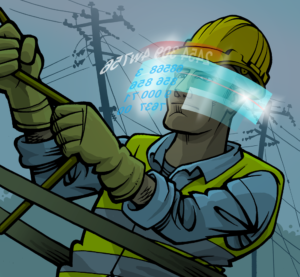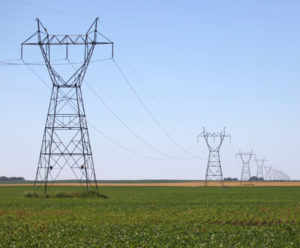Facts, Figures, and Findings from EPRI Research, Reports, and Other Sources

EPRI Study: Driving EVs and Off-Road Electric Equipment Could Improve Air Quality
By 2030, deployment of electric vehicles and off-road electric equipment can lead to modest, but widespread, emissions reductions and air quality improvements in the service area of Tennessee Valley Authority (TVA), according to an EPRI study. Using an EPRI model and TVA market data, researchers projected that in 2030, electric vehicles would account for 9% of vehicle miles in the TVA region, and various types of electric off-road equipment would capture market share ranging from 17% to 85%. Based on this, they modeled the impacts on air ...
Read More
By 2030, deployment of electric vehicles and off-road electric equipment can lead to modest, but widespread, emissions reductions and air quality improvements in the service area of Tennessee Valley Authority (TVA), according to an EPRI study. Using an EPRI model and TVA market data, researchers projected that in 2030, electric vehicles would account for 9% of vehicle miles in the TVA region, and various types of electric off-road equipment would capture market share ranging from 17% to 85%. Based on this, they modeled the impacts on air ...
Read More

Study: LEDs Can Replace Fluorescent Lights with Equal Performance and High Efficiency
An EPRI study indicates that utilities should consider linear light-emitting diode (LED) lamps and troffers for rebates and incentives in their energy efficiency programs to replace linear fluorescent lights in the commercial sector. The switch offers significant energy savings with adequate light levels and payback. Researchers scanned the LED market for potential fluorescent light replacements and examined 20 products in EPRI’s lighting laboratory, measuring light output, efficacy, illuminance, energy savings, and payback. LED lamps offered energy savings of 25–61% relative to fluorescents. LEDs in dimmable troffers provided 28–36% ...
Read More
An EPRI study indicates that utilities should consider linear light-emitting diode (LED) lamps and troffers for rebates and incentives in their energy efficiency programs to replace linear fluorescent lights in the commercial sector. The switch offers significant energy savings with adequate light levels and payback. Researchers scanned the LED market for potential fluorescent light replacements and examined 20 products in EPRI’s lighting laboratory, measuring light output, efficacy, illuminance, energy savings, and payback. LED lamps offered energy savings of 25–61% relative to fluorescents. LEDs in dimmable troffers provided 28–36% ...
Read More

Time for a “Time Guru”? Study Says Grid Reliance on “Precision Time” Offers Benefits and Cyber Security Vulnerabilities
Utilities increasingly rely on precision time as they deploy more automation and time-dependent applications on the grid, according to an EPRI survey of 24 companies. Such systems can synchronize all grid data to support reliability, safety, and flexibility. Today, utilities typically require accuracy within 1 millisecond for such applications as digital fault recording, synchrophasor measurements, substation metering, and monitoring grid disturbances. They are planning significant deployment of network-based precision time protocol for synchronizing devices with sub-microsecond precision. Along with the grid benefits, ...
Read More
Utilities increasingly rely on precision time as they deploy more automation and time-dependent applications on the grid, according to an EPRI survey of 24 companies. Such systems can synchronize all grid data to support reliability, safety, and flexibility. Today, utilities typically require accuracy within 1 millisecond for such applications as digital fault recording, synchrophasor measurements, substation metering, and monitoring grid disturbances. They are planning significant deployment of network-based precision time protocol for synchronizing devices with sub-microsecond precision. Along with the grid benefits, ...
Read More

By 2018, utilities should see significant improvement in smart glasses, helmets, and other augmented realityaugmented reality devices, concludes an EPRI study. “In the meantime, it is critical for companies to monitor technology developments, assess potential applications, and consider policy changes to accommodate new ways of working,” said EPRI Technical Executive John Simmins. While technological barriers remain, innovation is rapid. Near term, the EPRI study predicts improved computational power, reduced size and power consumption, and breakthroughs in devices’ optics, lenses, and sensors. Vendors will introduce new options for connectivity, charging, and security, and ease of use will improve with new software ...
Read More
Read More

Uncertainties in a Changing Energy Grid Call for New Methods to Schedule Maintenance Outages
If your job were to repair potholes in a road where “rush hour” can happen at any time of day, you would need to be ready at a moment’s notice and watch oncoming traffic carefully. Power plant and transmission system owners face a similar challenge today: With more renewables impacting the use of the grid and other generation resources, it’s becoming much more difficult to schedule maintenance-related outages. EPRI has documented these challenges in a recent report and is examining the need for more sophisticated tools ...
Read More
If your job were to repair potholes in a road where “rush hour” can happen at any time of day, you would need to be ready at a moment’s notice and watch oncoming traffic carefully. Power plant and transmission system owners face a similar challenge today: With more renewables impacting the use of the grid and other generation resources, it’s becoming much more difficult to schedule maintenance-related outages. EPRI has documented these challenges in a recent report and is examining the need for more sophisticated tools ...
Read More

